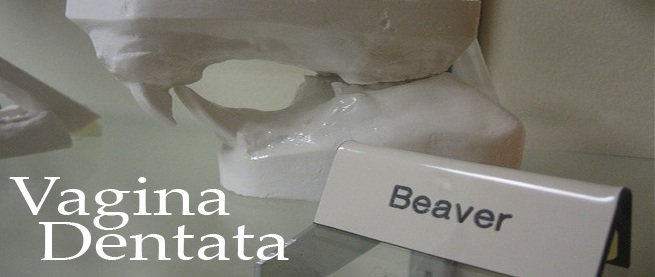I hope this is the only post I will ever do on the cosmetics industry. Mostly because to be honest, I really don’t care about make-up and really don’t think it’s the biggest feminist issue facing the world today. That’s not to say that I don’t think the Beauty Myth is alive and kicking but I do not think make-up is the fundamental issue, rather the restrictive and often exploitative female body images perpetuated by our consumer-based culture.
I don’t have a problem with women or men wearing make-up even if it is feeding into a $197 billion dollar industry. I would wear it more if I knew how to put it on but I think I missed that day at school.
That aside, I do find it fascinating that L’Oreal are so heavily involved in promoting women in science, to the extent that they have gone in with UNESCO on an annual global women in science prize.
Now there are much better analyses than I could do on the claims of cosmetic companies – (e.g L’Oreal having to pull an ad campaign on anti-wrinkle cream). However, it is also a highly regulated industry (by European Cosmetic Directive for example) and therefore the claims they make tend to be worded in such a specific way so as to make no claim whatsoever. Handbook of cosmetic science and technology is great on this.
So instead, rather than make actual specific scientific claims, some cosmetic companies seek to brand themselves as ‘sciencey’. Rather than make a choice of products on the basis of the scientific claims consumers will simply associate them with the noble cause of scientific endeavour. This is why adverts will be chocka with ‘sciencey’ sounding words.
To illustrate the dubious devotion to science from the cosmetics industry I’ve picked my top ten sciencey words and phrases. I think this might become my new hobby.
- Aqua-spheres
Er, water. - Dermapod
This is the name they gave to the tub it comes in. And no its not pod shaped or from the future. - Vitafibrine
I think this is means ‘vital’ and ‘fibres’ which apparently “fight against the distension of the mesh of the skin by reconstructing the structure of elastin by consolidating the network of fibers (in vitro test)"*
* Ah, the all important ‘In vitro test’ which (as of course you know) means testing cell cultures in a Petri dish rather than on human volunteers. This is probably the most widely used method for making scientific claims in the cosmetic industry. - Fruit micro-waxes and active fruit concentrates
These are in a styling gel and a shampoo apparently. I know what these words mean separately but not together. And I love how its not just fruit waxes its fruit ‘micro’-waxes. Just as meaningless but smaller. - Collagen biospheres
I presume they don’t mean an ecosystem or one of those greenhouses, bio-dome things. Probably just collagen drops. - Formula
This is used all the time. You don’t get ‘recipes’ or ‘concoctions’ or ‘mixtures’. You get formulas with numbers and letters and shit. - Minerals
Such as; ‘enriched with minerals’ (hair gel, foundation) ‘mineral water’ (mousse blush) ‘made with 95% natural, skin-loving minerals’ and ‘light-diffusing mineral powders’ (powder blush). Obviously no indication of what minerals or why. - 3D magnifying lipgloss
This is getting out of chemistry and into physics. I’d be far more impressed with something that you smear on our face which was 2D or even better 4D. Alternatively, I’d have to a Cyclops to be wowed by 3D. - PureSkin TM complex
Ah, putting two words together into one! The canny trade-mark! The subtle use of the word ‘complex’. That's pure distilled science right there. - Royal Jelly
Royal Jelly just always sounds rude to me, but then I have the sense of humour of a 13 year-old boy. But I’m also interested that bee secretion should be used in shampoo. ‘Not honey, oh no, we use bee secretion’. Weird.
I certainly have a problem with brands as a concept, the idea of ‘having a relationship’ with a product is frankly weird (up to and including vibrators). It removes us a step from the functionality of the product and assumes that we make choices on the basis of font size, colour and packaging, which unfortunately is exactly what human beings seem to do. (This is particularly well illustrated with packaging for fags - really recommended study)
Indeed, most multinationals are involved in ‘philanthropic’ enterprises and have (up until the recession) had burgeoning corporate social responsibility (CSR) departments. With restricted science funding, we can't get too precious and increasingly private finance is the only option. There are many problems with transnational corporations' involvement with CSR which I won’t go into here, but I think its fair to say they are the handmaidens of evil. (And before anyone says it I know it’s a little more complicated than that, here).
Ultimately, its our fault for buying into brands, letting them get away with stupid sciencey talk, leaving science funding to private companies and the little matter of gender inequality.
As an aside, in researching this post, I came across these disclaimers in tiny type at the bottom of some Rimmel TV ads:
‘Enhanced in post-production’ – Ad with Kate Moss.
‘Filmed with lash inserts and enhanced in post production’ – Mascara ad with Sophie Ellis Baxtor.
‘Everything in this ad is a complete lie’ – TruFact Ad in my head












